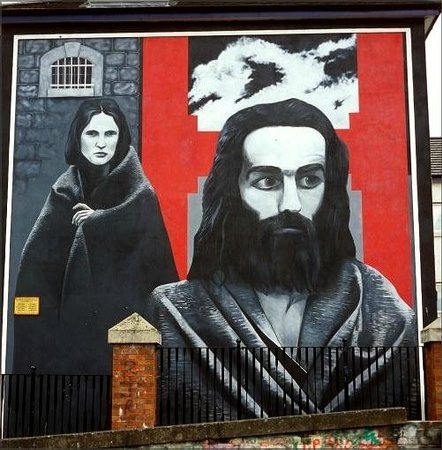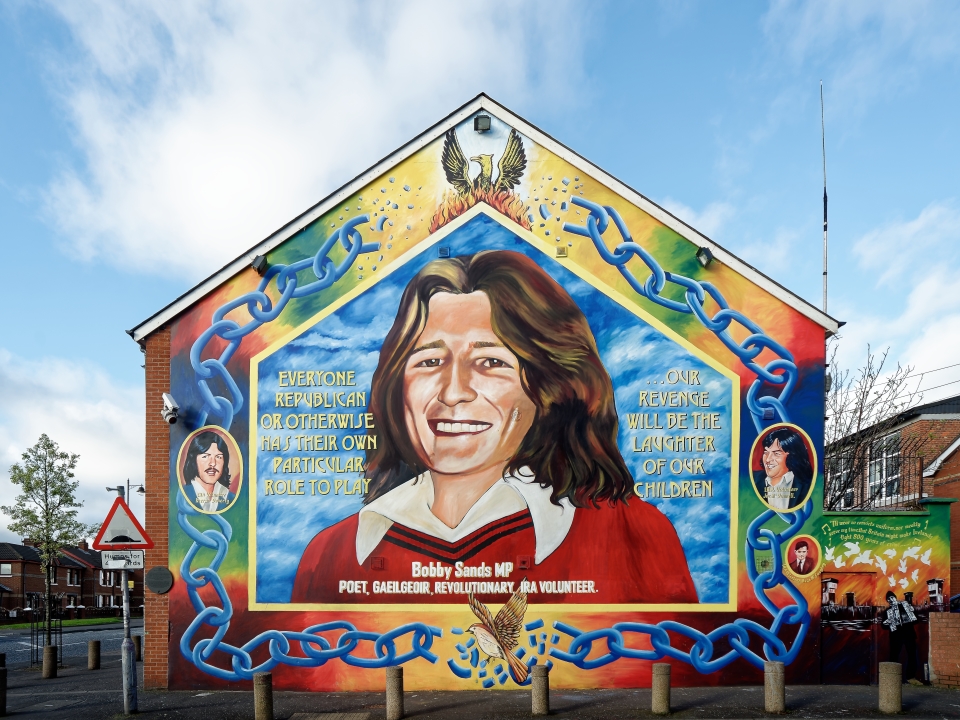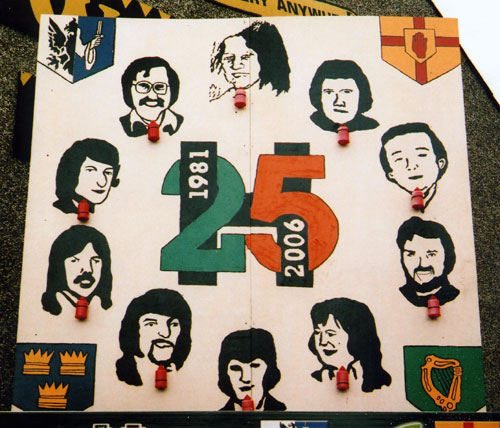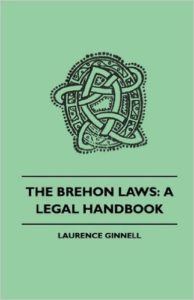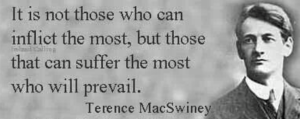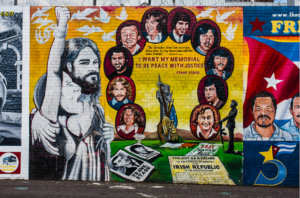Hunger Strikes
Historical Background
According to the Brehon Law Academy, the use of hunger striking in Irish history dates back to the 5th century when the Brehon laws were first established within Gaelic culture.¹ Under the Brehon laws, an individual would perform a troscud, which translates to fasting. The ancient act of troscud was used by the lower class against the upper class as a necessary legal step when bringing forth a grievance. It gave an individual of lower standing, a temporary position of moral and legal power over a more privileged individual.¹ When this ancient custom of troscud is applied to the modern act of hunger striking, the factors that gave these acts mainstream support become clear. Despite the gap in time between the ancient custom of troscud, and modern hunger striking, the end result of these acts are identical. The individuals performing these acts understood that even a person in a position of perceived weakness, can illicit a moral and legal pressure upon their oppressor; through the voluntary mortification of the physical body.
Terrence MacSwiney’s 1920 Hunger Strike
“If I die I know the fruit will exceed the cost a thousand fold. The thought makes me happy. I thank God for it. Ah Cathal, the pain of Easter Week is properly dead at last”¹¹
- An excerpt from a letter written to Cathal Brugha at the beginning of his hunger strike . It is clear that MacSwiney understood the ramifications of his actions and he was willingly to sacrifice his life for the freedom of Ireland.
The driving force behind Terrence MacSwiney’s hunger strike in 1920, was the belief that his imprisonment was illegitimate. As the Lord Mayor of Cork, he refused to recognize the authority of a military tribunal to pass judgement against the head of a city.¹¹ The ideological belief behind this decision is rooted in MacSwiney’s need to reclaim control. The British government had infringed upon that right, therefore, the only way to reclaim his free will was to force the British government to release him, or die under his own volition. MacSwiney’s choice of gradual martyrdom through voluntary physical mortification can be strongly correlated to the historical practice of martyrdom by the Catholic Church.¹²
1980 Hunger Strike
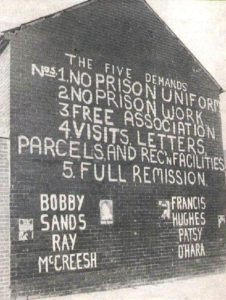
In “Provos the IRA and Sinn Fein,” Peter Taylor explains that the main cause of the hunger strike was the refusal by the British government to reinstate the “special category status” for IRA prisoners.¹⁵ Prisoners initially began their protest by refusing to wear prison uniforms, which resulted in maltreatment by the prison guards, such as the refusal to dispose of feces.¹³
“One would hardly allow an animal to remain in such conditions, let alone a human being. The stench and filth in some of the cells with the remains of rotten food and human excreta, scattered around the walls, was almost unbearable.”
Cardinal O’Fiaich on August 1, 1978 after a visit to the Maze prison.¹³
http://http://https://www.youtube.com/watch?v=XdthPqn99PI
The above video depicts Raymond McCartney three weeks into his hunger strike, which lasted a total of seventy-three days and resulted in his death.
With the failure of the blanket men protest, the prisoners decided to resort to a hunger strike, despite opposition from the Provisionals. This hunger strike ended in relative confusion and resulted in the overall failure of the prisoners to force the British to meet their demands.¹³ However, it is necessary to note that during the hunger strike, there were numerous demonstrations and protests in support of the hunger strikers cause.
1981 Hunger Strike
In the wake of the 1980 hunger strike, the British government had the opportunity to de-escalate the situation through a change in the prison routine, however, Margaret Thatcher insisted on establishing a harsher regime in an attempt to demoralize the IRA.¹³ Her actions had the opposite effect, due to the ingenious decision of the hunger strikers to initiate the strike in staggered intervals. This prolonged the length of the overall hunger strike, allowing the movement to gain public recognition and establish a strong base of support. The hunger strike came to an end on October 3, 1981 after relatives of the hunger strikers said they would intervene if a member of their family was in critical condition.¹⁵ The hunger strike focused the discontent and resolve of the nationalist minority which resulted in a stronger political participation by the IRA.¹³
Outside sources that further enhance the significance of hunger striking as a public protest and the perpetual power it can hold through artistic expression.
http://http://https://www.youtube.com/watch?v=I3F2Px-EYb0


